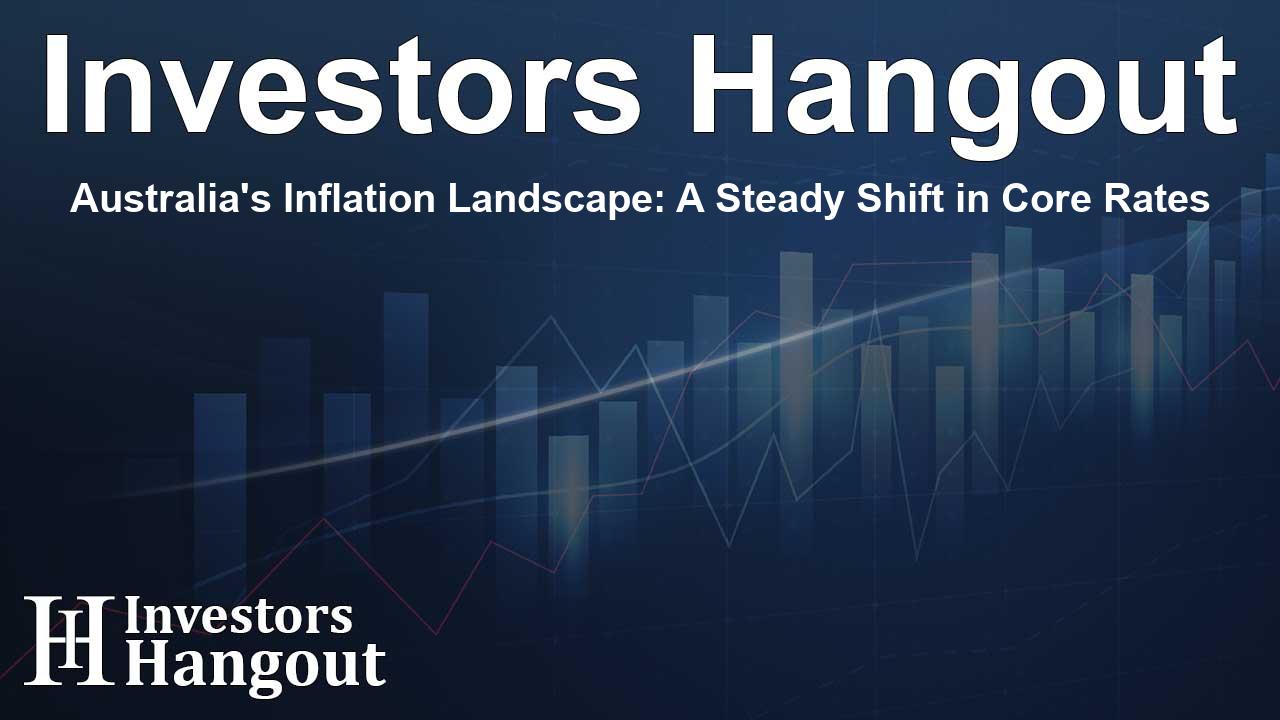Australia's Inflation Landscape: A Steady Shift in Core Rates

A Look at Australia’s Monthly Inflation Rates
In the current economic landscape, Australia has displayed a consistent consumer price inflation rate, maintaining a three-year low as of October. Thanks to government initiatives, the impacts of electricity and rent prices have decreased significantly, revealing a complex picture of inflation trends.
Current Consumer Price Index Insights
According to recent data released by the Australian Bureau of Statistics, the monthly consumer price index (CPI) indicated an annual growth of 2.1% for October. This figure has remained consistent since September and falls short of the market’s expectations, which were set at 2.3%.
In comparison to the previous month, the CPI saw a slight decline of 0.3%. This steadiness in numbers underscores the effectiveness of measures aimed at keeping inflation in check, although it reveals underlying pressures.
Understanding Core Inflation Changes
One significant statistic to note is the trimmed mean measure of core inflation. This metric rose to an annual rate of 3.5%, signifying a jump from 3.2% in September. This increase suggests that core inflation remains well above the Reserve Bank of Australia's (RBA) desired target range of 2% to 3%, presenting challenges when considering interest rate adjustments moving forward.
The report for October doesn't exclusively represent comprehensive price updates across a breadth of services, particularly those that concern the central bank. This reality implies that there may be limited implications for monetary policy, given that the RBA has noted the inherent volatility associated with monthly reports.
Market Reactions and Predictions
As markets analyze these figures, anticipation for potential rate cuts remains uncertain, with indications suggesting that rates may not decrease until later next year. Currently, financial forecasts imply just a 14% chance of a rate cut occurring in December, reflecting cautious sentiment among investors.
Following the release of this data, the Australian dollar remained stable at $0.6474, while three-year bond futures maintained earlier gains, sitting at 96.02 with slight increases.
The RBA's Current Stance on Interest Rates
For a substantial period, the central bank has kept interest rates steady. Presently, the cash rate stands at 4.35%, a considerable rise from the record low of 0.1% experienced during the pandemic. This current rate is seen as sufficiently restrictive, aimed at steering inflation back within the target band without jeopardizing employment growth.
Further commentary from the RBA suggests a deliberate approach to observing more than a singular positive quarterly inflation report before considering any adjustments to interest rates. For this reason, market participants are assessing only a 27% possibility of a rate cut come February, which will follow the fourth-quarter CPI results.
Government Subsidies and Their Impact
Government efforts, particularly in terms of subsidies for electricity, have made a palpable difference in pricing. In fact, for the month of October, these subsidies succeeded in lowering electricity prices by 12%. Rent prices also witnessed a decline of 0.3% from September, primarily due to government relief initiatives.
Interestingly, when accounting for more volatile items and excluding holiday-related travel expenses, the annual CPI saw a decrease to 2.7%, compared to September's figure of 3.0%. This nuanced understanding of statistics is crucial for grasping the broader economic narrative at play.
Frequently Asked Questions
What is the current inflation rate in Australia?
The current consumer price inflation rate in Australia is 2.1% as of October.
What does core inflation measure indicate?
The core inflation measure rose to 3.5% annualized, indicating ongoing cost pressures beyond volatile items.
How have government measures impacted electricity prices?
Government subsidies have effectively decreased electricity prices by 12% in October.
What is the RBA's target inflation rate?
The RBA aims for an inflation rate between 2% and 3%.
When can we expect potential interest rate cuts?
Interest rate cuts are not expected before May, with only a minimal chance predicted for December.
About The Author
Contact Hannah Lewis privately here. Or send an email with ATTN: Hannah Lewis as the subject to contact@investorshangout.com.
About Investors Hangout
Investors Hangout is a leading online stock forum for financial discussion and learning, offering a wide range of free tools and resources. It draws in traders of all levels, who exchange market knowledge, investigate trading tactics, and keep an eye on industry developments in real time. Featuring financial articles, stock message boards, quotes, charts, company profiles, and live news updates. Through cooperative learning and a wealth of informational resources, it helps users from novices creating their first portfolios to experts honing their techniques. Join Investors Hangout today: https://investorshangout.com/
The content of this article is based on factual, publicly available information and does not represent legal, financial, or investment advice. Investors Hangout does not offer financial advice, and the author is not a licensed financial advisor. Consult a qualified advisor before making any financial or investment decisions based on this article. This article should not be considered advice to purchase, sell, or hold any securities or other investments. If any of the material provided here is inaccurate, please contact us for corrections.
